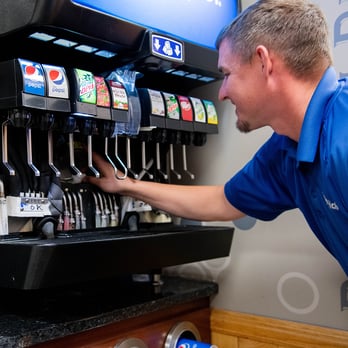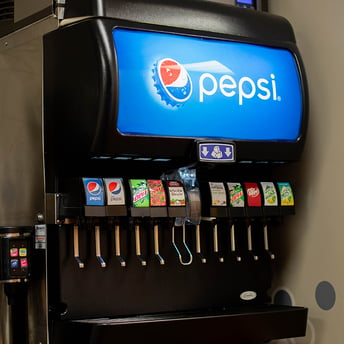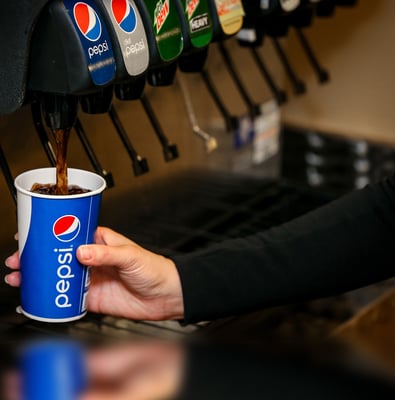Taking proper care of your soft drink machine and other food service equipment has likely never been the favorite task of anyone working in the industry. Yet its importance has always been communicated and adhered to operate a safe, healthy business.
Don’t just take our word for it. A group of researchers at Hollins University in Virginia found bacteria in nearly half of the 90 beverages sampled from soda fountain machines in one area of the state. A good majority of these machines were located in fast food restaurants and convenience stores. Do you want to avoid this fate in your establishment? Continue reading to learn tips on how to clean your machine, as well as steps to take for preventative, proactive maintenance.
How to Clean Your Fountain Machine
The regular cleaning of your fountain drink machine, its surface, and its components can be done by you and your staff. There are various ways you can ensure your machine is in tip-top condition at all times.
1. Outside Surfaces
When your cleaning staff or employees are tidying up your space, ensure they wipe the outside of your fountain machine with a clean, damp cloth. This should be done on a daily basis. By scrubbing up the outside surfaces, your fountain machine will remain clean, sanitary, and safe for customers to access.
2. Drain Areas
During your regularly scheduled cleaning throughout the day, pour hot water down the fountain machine drain. This will keep things fresh and clean and ensure nothing is blocking your drain. Although you can use a mild bleach solution periodically to eliminate any odor, you should never use a drain cleaner.
3. Nozzles
When cleaning your fountain machine nozzles, make sure you do not use any chemicals. These should also be cleaned daily to maintain a tidy soda fountain machine. Remove and dismantle the nozzles and soak them in hot water.
4. Bar Gun
Don’t forget this part of the machine! Twist off the bar gun's nozzle and clean all of its components. You can submerge the gun for up to 30 seconds in hot water and then clean it with a cloth.
5. Connectors
Last but not least, clean your connectors. Submerge them in hot water and wipe them clean—it’s that easy.
Preventative, Proactive Maintenance
When you purchase a soda fountain machine from Bernick’s, we will always include preventative maintenance with experts that are well-versed in your systems. Our Service Technicians are scheduled to visit each fountain machine account regularly to perform various preventative maintenance actions and ensure that your fountain machine is performing at the healthiest, most efficient standards.
Soda Fountain Troubleshooting
Troubleshooting any issues that arise with your fountain machine can be done by the customer. Here are a few different, everyday issues that can often be corrected without the help of a Bernick’s technician.
- No Pop or Flat Pop: Check your CO2 levels, and be sure the valve is open. Check the gauges to ensure adequate pressure and that there is still CO2 left in the cylinder.
- No Syrup, Just Water Coming Out: Check to see that there is still syrup in the box. If it is empty, this will need replacement.
Proper fountain machine care will keep your machine in peak condition. This means regular cleanings and maintenance. However, if you ever run into a problem you can't handle, help from a Bernick’s expert is only a phone call away.
24-Hour Fountain Machine Service, At Your Service 
With the help of Bernick’s experts and a routine cleaning schedule at your establishment, your fountain drink machine can not only be an excellent option for your visitors but a great experience (and business asset) for you, your staff, and your company.
If you cannot determine a fix for your fountain machine or its equipment, that’s okay! Our expert technicians are available 24 hours a day for assistance and maintenance. We aim to arrive within 4 hours of your call on weekdays and do our best to stick to that timeframe. Because of varied needs and issues, service call responses can vary during weekends. We work hard to provide our customers with the latest equipment and the best-trained team members to service your machines.
Editor’s Note: This post was originally published in June 2016 and has been updated for freshness, accuracy, and comprehensiveness.



